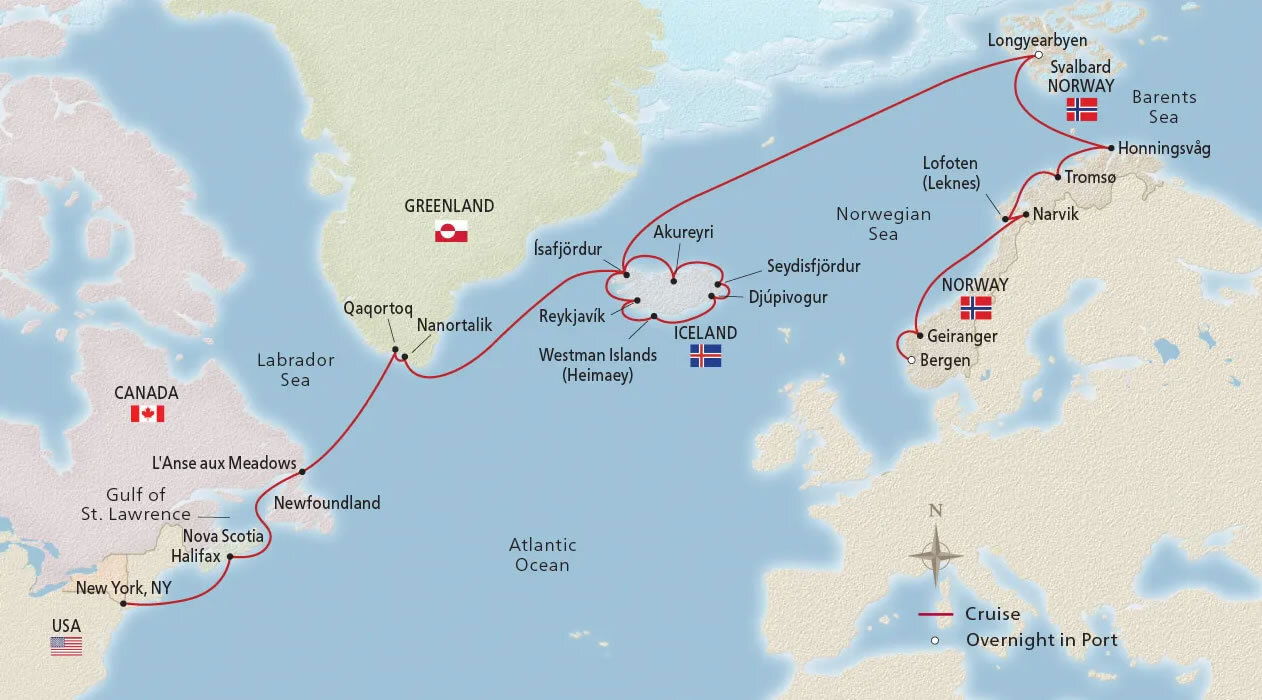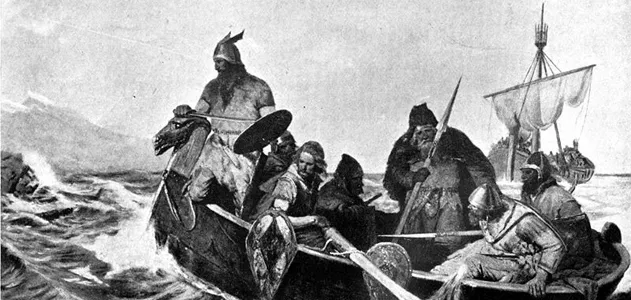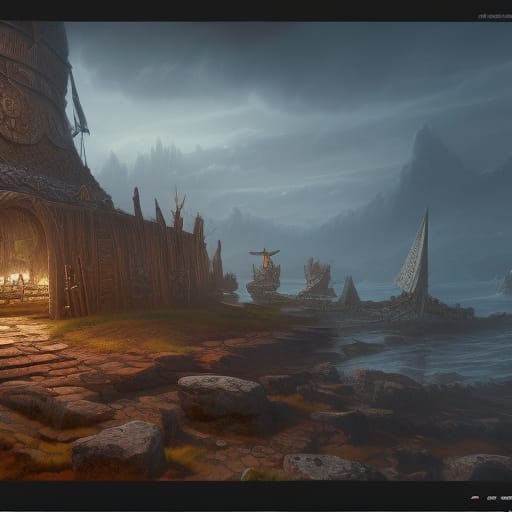The Vikings were intrepid explorers who sailed across vast expanses of the North Atlantic, reaching new lands and establishing settlements. One notable chapter in their exploration was their journey to Greenland and beyond, showcasing their maritime skills and determination. In this blog post, we will delve into the Viking exploration of the North Atlantic, focusing on their discovery of Greenland and their ventures into even more distant territories.

-
The Discovery of Greenland
- Erik the Red: We will discuss the role of Erik the Red, a Viking explorer, in discovering and colonizing Greenland.
- Settlements and Agriculture: We will explore the Viking settlements in Greenland, including Brattahlíð and Garðar, and their agricultural practices in the challenging Arctic environment.
-
The Eastern Settlement: Norse Expansion in Greenland
- Geographic Extent: The Eastern Settlement, also known as Eystribyggð, was the largest and most populous Viking settlement in Greenland.
- Economic Activities: We will highlight the economic activities of the Norse settlers, including farming, hunting, fishing, and trading, and their interactions with the local Inuit population.
-
Exploration of Vinland: The New World
- The Sagas: We will examine the accounts in the Viking sagas, such as the Saga of the Greenlanders and the Saga of Erik the Red, that describe the Vikings' exploration and settlement attempts in Vinland (possibly modern-day Newfoundland).
- Cultural Encounters: We will discuss the encounters between the Vikings and the indigenous people of Vinland, known as the Skrælings, and the challenges they faced in establishing a lasting presence.
-
Beyond Greenland: Viking Voyages to North America and Beyond
- Possible Explorations: We will touch upon the theories and evidence suggesting Viking voyages to other parts of North America, such as the Gulf of St. Lawrence and New England.
- Norse Expeditions: We will discuss the significance of the Norse expeditions led by Leif Erikson and Thorfinn Karlsefni, highlighting their contributions to early transatlantic exploration.
-
Legacy and Decline
- End of Viking Presence: We will explore the factors that contributed to the decline of Viking settlements in Greenland, including changing climate, conflicts with the Inuit, and possible socioeconomic factors.
- Cultural Impact: We will discuss the lasting cultural impact of Viking exploration in the North Atlantic, influencing future European exploration and the narratives of New World discoveries.

Conclusion: The Viking exploration of the North Atlantic, particularly their discovery of Greenland and ventures into Vinland, showcased their seafaring skills, resourcefulness, and the indomitable spirit of exploration. Their journeys laid the groundwork for European exploration of the New World and left a lasting cultural impact. By studying their voyages, we gain insights into the remarkable achievements and legacy of the Viking explorers.
Works Cited:
- Fitzhugh, William W., and Elisabeth I. Ward, editors. Vikings: The North Atlantic Saga. Smithsonian Books, 2000.
- Gísli Sigurðsson. The Viking Discovery of America: The Excavation of a Norse Settlement in L'Anse aux Meadows, Newfoundland. Nordic Council of Ministers, 2000.
- Jones, Gwyn. The Norse Atlantic Saga: Being the Norse Voyages of Discovery and Settlement to Iceland, Greenland, and North America. Oxford University Press, 1986.
- Price, Neil. Children of Ash and Elm: A History of the Vikings. Basic Books, 2020.





Leave a comment
This site is protected by hCaptcha and the hCaptcha Privacy Policy and Terms of Service apply.